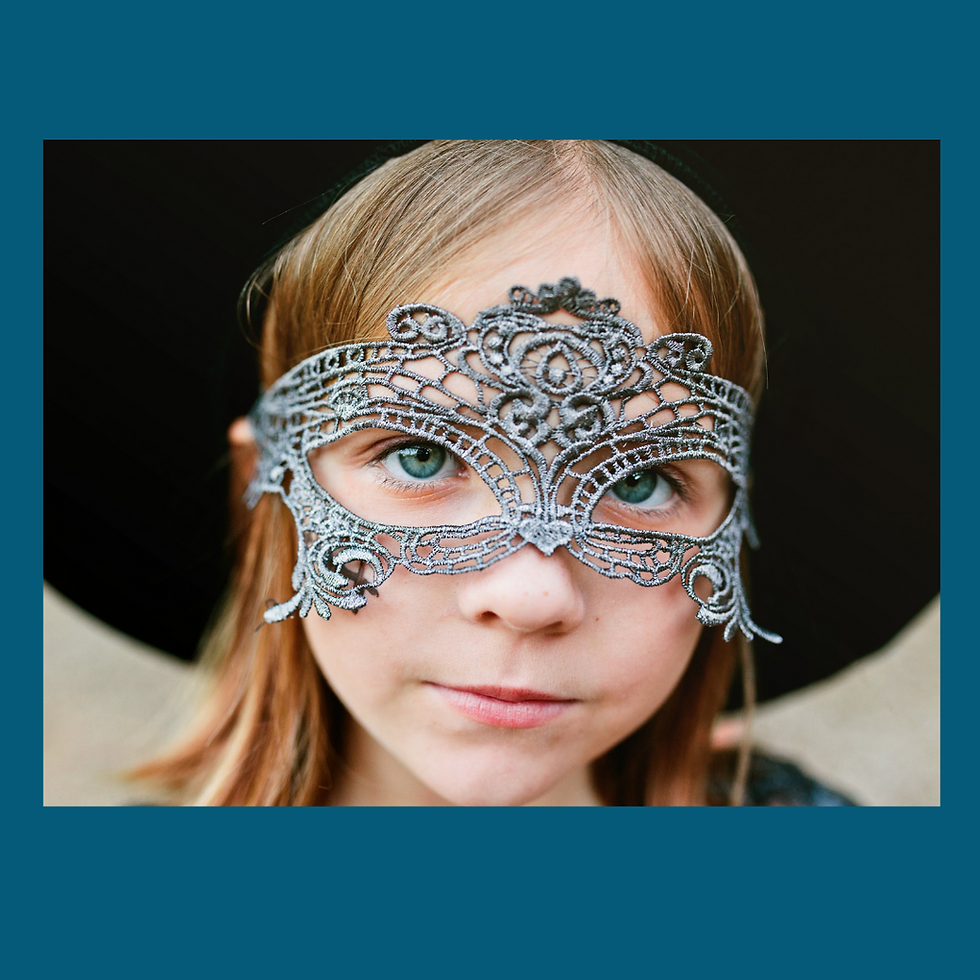
"MASKING" in autism may be a relatively new term, yet it is far from a novel concept.
But what is masking, exactly?
Masking is a strategy an autistic person uses to help them try to adopt what society typically considers "acceptable" behavior. What is key to realize is that "acceptable" behavior reflects neuro-typical standards and not what comes naturally to someone with an autism neurotype. An autistic individual may have strengths and challenges which are not only unique to themselves, but are quite different from the mannerisms, processing, thinking, and perspectives of neuro-typicals.
Examples of masking are seen when an autistic individual forces herself to act in the following ways:
* making eye contact with a friend or teacher when eye contact doesn't feel comfortable
* inhibiting a comforting or self-regulating "stim" such as rocking oneself side to side or flicking fingers
* Forcing oneself to be still when their body craves movement
* Stopping oneself from talking about their individual "special" interests (as these are often discouraged)
* Forcing oneself to make small talk on a day when communication through speaking is too much and too challenging
So, why is masking unhealthy for individuals with autism?
Evidence from the past few years shows that 40% of autistic adolescents have a formal co-morbid diagnosis of anxiety (Chiang et al., 2016). What is key to realize is that anxiety causes people to have significant challenges in many areas, such as academics, sports, health outcomes, quality of life, and social satisfaction (Adams et al., 2019). Further, anxiety contributes to depression and poor mental health conditions.
What can we do to reduce masking in autistic children and students in our lives?
* Encourage self-stimulatory behaviors like rocking, pacing, or bringing objects close to their eyes or ears. These "stims" are typically self-regulating to autistics and allow them to feel calmer and to block out overwhelming emotions or sensory input. When "stims" present dangers or dysregulation to themselves or others then more appropriate "stims" can be introduced as substitutions.
* Encourage kids to share information about their unique interests. Try to incorporate a child's special interests into their everyday lives, games, and academics.
* Never expect or require eye contact. Eye contact can be uncomfortable for autistic people, bordering on painful (Trevisan et al., 2017). Also, many autistic adults report that forced eye contact can make it more difficult for them to pay attention to others, and often prefer only listening to others, rather than looking at facial expressions at the same time.
* Embrace and encourage autistic children and teens to be themselves. Reinforce to them that they are unique and fantastic individuals!
As always, feel welcome to touch base with me, Dr. Lisa Marnell, OT, by e-mail at KidsMasterSkills@gmail.com I would love to hear about your successes, your struggles, and any questions or comments you have!
If you found this blog post helpful, learn more about my online Comprehensive Training: Helping Kids Master CALM: a PROACTIVE program to cultivate emotional regulation in autistic children and teens.
I also wanted to share that I am SO excited to share that my FREE Online Autism Masterclass is available now at my website HERE: https://www.kidsmasterskills.com/ In this course you will learn proactive strategies to support sensory sensitive autistic children and teens!

Comments